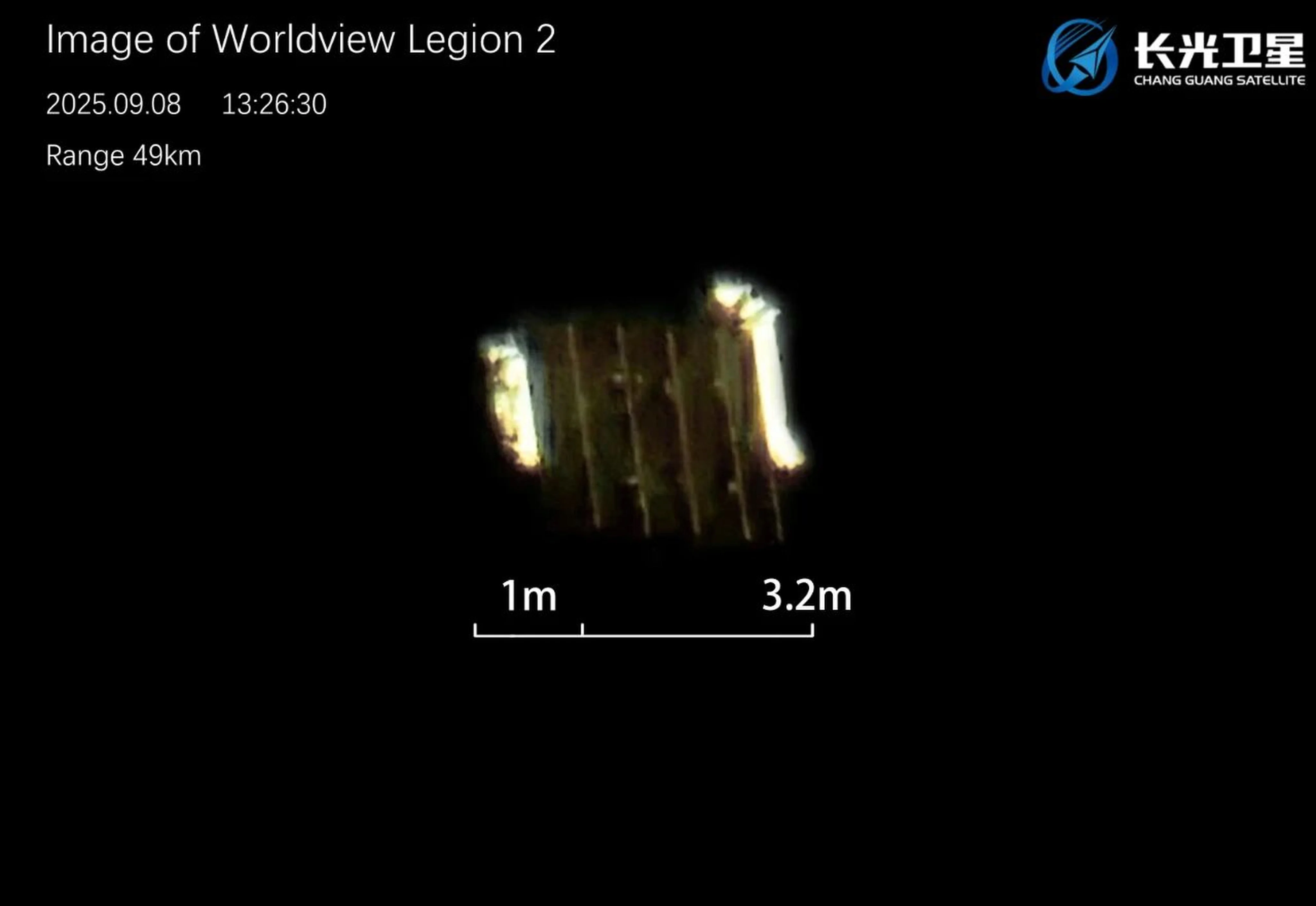By Zhang Tong
Copyright scmp

In a notable display of reconnaissance capabilities, a Chinese satellite has observed an American satellite that was itself monitoring China’s space station and high-value satellite, a move analysts described as a strategic tit-for-tat in an increasingly contested space domain.
China’s Jilin-1 satellite constellation, operated by Chang Guang Satellite Technology, seized a favourable orbital window on September 8 to capture four images of the WorldView Legion satellite from distances ranging between 40 and 50km (31 miles).
Published last Saturday on the company’s official social media account, the pictures marked the first time Chang Guang had made public such dynamic space-based imagery.
The incident follows a social media post by US commercial remote sensing company Maxar Intelligence in early July, featuring images of China’s Shijian-26 satellite taken by its own high-resolution WorldView Legion satellite on June 3.
Those photographs, captured from distances of 29km and 74km with resolutions of 1.9cm and 4.9cm respectively, revealed the satellite’s structure in sharp detail.
Susanne Hake, general manager at Maxar Intelligence’s US government business, said the Shijian-26 represented China’s newest generation of optical reconnaissance satellites and that the clarity of the imagery signalled a new era in orbital observation.
Previously, the US-based company also released images of China’s Tiangong space station and the International Space Station at 10cm resolution.
Military analysts suggested the recent actions underscored an intensifying space race driven by advances in satellite tracking, positioning and high-precision imaging capabilities.
Chang Guang Satellite did not immediately respond to a request for comment.
Reverse observation of surveillance satellites requires real-time acquisition, identification and tracking of targets in space, essentially enabling high-accuracy, rapid early warning of orbital activities.
Chang Guang Satellite, China’s first commercial remote sensing company, now operates more than 100 Jilin-1 satellites in orbit, capable of achieving resolutions of up to 0.5 metres and revisiting any global point within 10 minutes.
The company is also focused on large-scale satellite constellation networking, with an annual production capacity of 200 remote sensing satellites and 200 communication satellites.
Last year, it successfully conducted ultra-high-speed laser communications tests, achieving rates of 100 gigabits per second between satellites and ground stations.
The technological competition is unfolding amid an escalating militarisation of outer space.
The United States in 2019 established the US Space Force as its sixth independent military branch. In response, China in April last year formed the People’s Liberation Army Aerospace Force, which took part this month in a large-scale military parade in Beijing.
Chinese officials describe the unit as dedicated to the peaceful use of space and enhancing safe access and utilisation of outer space.
But international tensions over space operations have flared before.
In 2021, SpaceX’s Starlink satellites twice approached the Chinese space station, prompting evasive safety manoeuvres in July and October of that year.
At the time, China urged the US to take immediate measures to prevent similar incidents and to respect the international space legal framework.
Chang Guang Satellite has previously showcased its capabilities, releasing videos of rocket launches and tracking military aircraft formations during parades.
However, imaging another satellite is significantly more challenging due to the extremely high relative velocities involved, demanding exceptional pointing and tracking control.
Such capabilities are not only critical for space object identification, monitoring and anti-satellite operations validation, but also carry significant strategic deterrence value.
Some analysts have suggested that, combined with laser weapons, they could pave the way for satellite-based offensive and defensive engagements in the future.
Analysts have warned that as space becomes a frontier for strategic competition there is an urgent need to establish more effective norms of behaviour to prevent an escalation into conflict.



